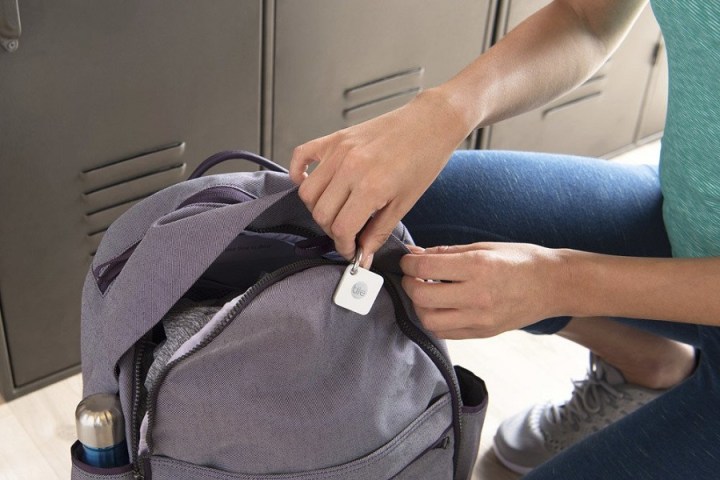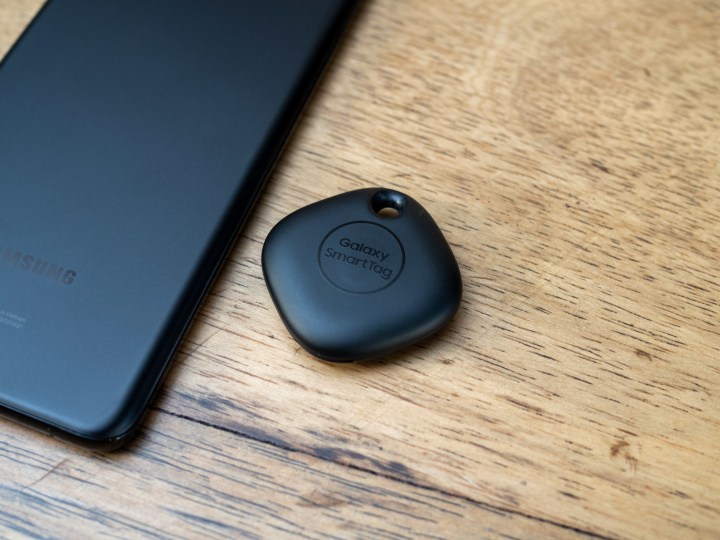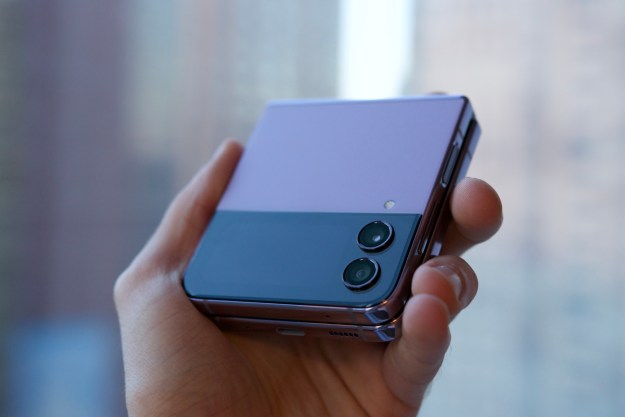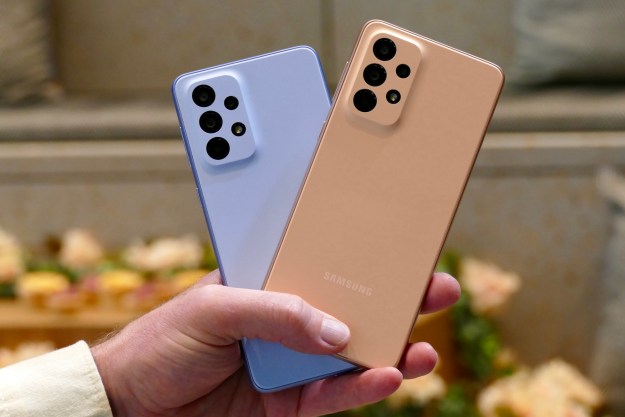For many years, Tile has pretty much been the best-known name in Bluetooth location trackers. The idea is a sort of a niche one — attach a small piece of tech onto your keys, wallet, suitcase, or anything else of value, and you’ll be able to use your phone to find it if it goes missing. But now other companies are in on the idea, and Samsung’s Galaxy SmartTag is the latest competitor to hit the market.
With a price tag of $30 and a sleek design, the Samsung Galaxy SmartTag is certainly an attractive proposition. But is it better than Tile’s similarly-priced Tile Mate, and which one should you be spending your money on? We put the two head to head to find out.
Specs
| Samsung Galaxy SmartTags |
Tile Mate |
|
| Size | 39.11 x 39.11 x 9.9mm (1.54 x 1.54 x 0.39 inches) | 35 x 35 x 6.2mm (1.38 x 1.38 x 0.24 inches) |
| Weight | 0.46 ounces (13 grams) | 0.2 ounces (5.7 grams) |
| Bluetooth version | Bluetooth 5.0 | Bluetooth 5.0 |
| Range | 390 feet (120 meters) | 200 feet (61 meters) |
| Water resistance | None | Water-resistant |
| Battery | CR2032 (replaceable)
Lifespan of “months” |
CR1632 (replaceable)
1-year lifespan |
| Compatibility | Samsung Galaxy smartphones only | Most Android and iOS devices |
| Colors | Black, oatmeal, teal, pink | White |
| Price | $30 | $25 |
| Buy from | Samsung | Amazon |
Design
- 1. Samsung SmartTag
- 2. Tile Mate
“Square-ish” is how we’d describe both of these, and they share a lot of visual similarities. The Tile Mate has sharper edges than the SmartTag’s curves, but really, that’s about all there is to differentiate the two. But size is of a much larger concern when you’re dealing with a device you might attach to your keys, and it’s here the Tile Mate really shines. It’s slightly smaller than the Samsung SmartTag in every dimension, but it’s also significantly lighter at under half the weight of the SmartTag. While we’re talking about the difference between 13 grams and 5.7 grams, that’s going to be a noticeable difference while attached to your keys.
But the SmartTag has a surprise up its sleeve. Or rather, in its casing. The center of the SmartTag is actually a button, and you can set it up to control devices connected to your Samsung SmartThings app. If attached to your keys, holding the button might turn on your house lights, while pressing it once may start a playlist of your favorite songs in the kitchen. It’s a handy little feature, and it means there’s a reason to use the SmartTag even when you haven’t lost your keys.
While the size of the Tile Mate is a big plus for it, the SmartTag’s smart button is actually really useful, too. This is a draw.
Winner: Tie
Range

The primary way Bluetooth trackers work is — unsurprisingly — through Bluetooth. Essentially, your tracker pings off other nearby devices, which relay the information back to your device. It’s essentially a high-tech way of devices saying, “Oh yeah, I saw them over there.” So, the range at which your tracker can ping other devices is important, as the longer the range, the more chances it’ll be seen by another device.
Samsung’s SmartTag is the big winner here, with a 130-yard range. That translates to just under 120 meters (or 390 feet). By contrast, the Tile Mate’s range is 61 meters (or 200 feet). While that range is going to be different depending on the surroundings, as buildings will block the signal, Samsung’s dramatically-larger range is clearly a big draw, and it wins this round.
Winner: Samsung Galaxy SmartTag
Battery life

The batteries in Bluetooth trackers are often replaceable, but a longer battery life means there’s less chance it’ll fade on you when it’s needed most. Both of these trackers use replaceable watch batteries, but the Tile Mate pushes ahead with a stated one year of battery life. That’s a bigger statement of confidence than Samsung, which simply states the watch battery in the SmartTag will last for months. A year tends to be longer than months, so it’s clear the Tile Mate wins here by default.
Winner: Tile Mate
Software and compatibility

It goes without saying that the more devices your Bluetooth tracker is compatible with, the bigger the chance it’ll be picked up by a passing phone or tablet. Unfortunately, that doesn’t seem to have occurred to Samsung, as it has made the SmartTag only compatible with other Samsung devices running Android 8.0 Oreo or newer. Of course, Samsung is one of the biggest phone brands out there, and it runs off the built-in SmartThings app as well, so that’s a fairly broad church, but it still feels like a misstep.
The Tile Mate works with any Android device running
Winner: Tile Mate
Availability and price
The Samsung Galaxy SmartTag is currently available from Samsung, and it costs $30 for a single tag. Samsung has promised multipacks soon, but for the moment, you can only buy these as single trackers.
The Tile Mate is available from a number of retailers, and a single tracker will set you back $25. However, you can also buy packs of multiple Tile trackers to save money.
Overall winner: Tile Mate
The Samsung Galaxy SmartTag is clearly an excellent tracker with its large range, built-in smart button, and ability to track through a large number of Samsung devices. However, that last point is something of a kicker. Not only do you need to currently own a Samsung device to use the tracker, but you’re effectively locked out of using any other phone as long as you want to use the SmartTag.
By contrast, the Tile Mate may not have as large a Bluetooth range as the Samsung option, but it does have longer battery life and the ability to be used by almost any Android or iOS device. The Tile Mate is the clear winner here, and really, you should only invest in Samsung’s Galaxy SmartTag if you’re already invested in Samsung’s devices and intend to stay that way. The Tile Mate remains one of the best Bluetooth trackers out there, and that makes it our choice.
Editors' Recommendations
- The best Samsung Galaxy S22 Ultra cases in 2023: the 15 best ones
- The best Samsung Galaxy S22 Ultra screen protectors for 2022
- The best Samsung Galaxy Watch 4 Classic screen protectors
- The best Samsung Galaxy S21 Plus screen protectors for 2022
- The best Samsung Galaxy S20 FE screen protectors for 2022




